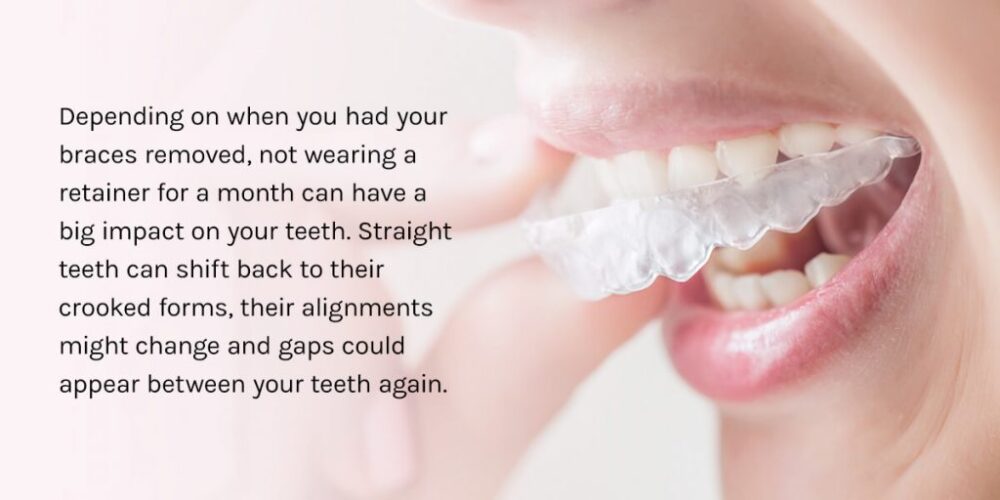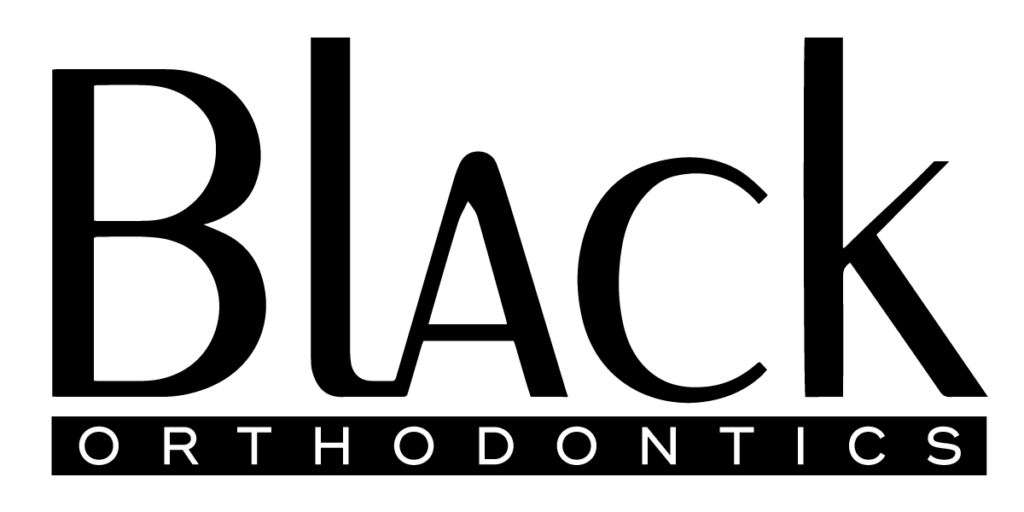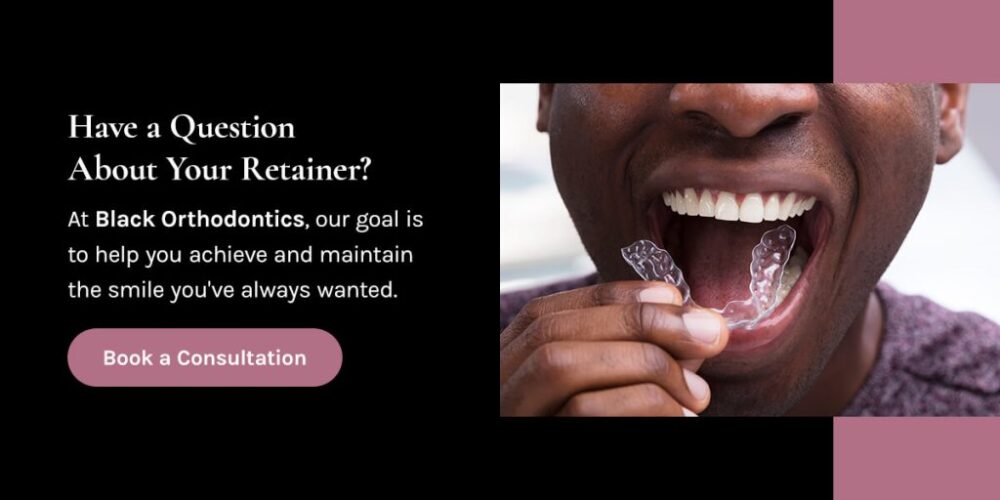Removing your braces after months of patiently waiting is one of the best feelings. You’re free to eat what you want again and no longer have metal stuck to your teeth. However, your braces are just the start of your journey to your perfect smile — now, you have to maintain it using retainers. Let’s review why retainers are important, what happens when you stop wearing them and what to do if you’ve already done so.
Why do you need to wear a retainer?
Once you’ve had any orthodontic treatment to straighten your teeth, you’ll need a retainer to maintain your teeth’s new position. Maybe surprisingly, your teeth have an “elastic” memory — they remember where they used to be. Once your braces are removed, it’s easy for your teeth to move back to where they used to be. To help, retainers give your gums and bones time to settle so that they can hold your teeth in place.
On top of that, our teeth move as we age and our bodies grow. Changes in your jaw can lead to crowding and crooked teeth forcing you to undergo additional orthodontic treatment. Wearing a retainer helps you maintain the new teeth position you have achieved with braces or clear aligners.
Remember that retainers don’t move teeth and can’t get them back into their straight positions. A retainer’s sole purpose is to help you keep your teeth straight. These tools are the best defense against your teeth rearranging themselves and reverting back to their original positions.
People with orthodontic issues such as temporomandibular disorders (TMD) or teeth grinding may also use retainers. Wearing retainers overnight can relieve the pain associated with many jaw conditions and prevent teeth grinding.
How long do you need to wear a retainer?
You’ll need to wear your retainer for the rest of your life when you have your teeth straightening treatment ends. There are different phases to wearing your retainers. During each stage, you’ll be able to wear your retainer for a shorter time until you might only need to sleep in your retainers once or twice a week to maintain your teeth’s position.
- Three to six months after removal: This is the most crucial time to wear a retainer. Most orthodontists recommend you wear your retainers for up to 22 hours a day for these first few months. You’ll only take them off when eating or brushing your teeth.
- Two years after treatment: Once you’ve completed the first few months of treatment, you can wear your retainers only while sleeping. You’ll have to wear them every night.
- Three years and onwards: After the first three years or so of wearing your retainer, you’ll be able to wear them every other night. Skipping one or two nights won’t cause your teeth to revert completely, but a good approach is to try to wear them every second night or so.
This timeline will look different for each patient. In some cases, orthodontists will suggest permanent retainers if there’s a chance your teeth will move back to their original positions.

What happens if you stop wearing your retainer?
If you stop wearing your retainer, will your teeth move back? The answer is yes. Slowly, your teeth will move and shift back into the positions they were in before you went through orthodontic treatment. Remember, your teeth have a “memory” of where they used to be and will return there given the chance.
Depending on when you had your braces removed, not wearing a retainer for a month can have a big impact on your teeth. Straight teeth can shift back to their crooked forms, their alignments might change and gaps could appear between your teeth again. You might also notice your bite change. Overall, you’ll be back where you started.
If you’ve stopped wearing your retainer for long enough, you’ll probably need to repeat your orthodontic treatment. Your orthodontist will need to fully assess your teeth to determine how much your teeth have moved. What they find during this assessment will determine how they approach fixing any changes in your teeth.
What do you do if you stopped wearing your retainer?
So, you’ve lost your retainer or simply stopped wearing it. What can you do now? Your teeth can shift faster than you expect, and in even a few short weeks, you might find your retainer doesn’t fit anymore after not wearing it. Resist the urge to try and fix the situation by putting our retainer back in straight away. You can create more issues for yourself by doing this:
- Pain: Retainers are custom-built, so forcing them over your teeth will be uncomfortable and can cause a lot of pain.
- Damage: Your teeth might get chipped or start cracking if you force your old retainer over them, especially if you wear a Hawley retainer with metal wires.
- Flawed shifting: While retainers aren’t designed to shift teeth, forcing them over your teeth will potentially cause them to align incorrectly, affecting your bite and causing discomfort.
If you put your retainer back on, take note of any discomfort you may feel. This pain will be a sign your teeth have moved. The best way to get back into wearing your retainer is to contact your orthodontist. They’ll be able to see how much your teeth have rearranged themselves and work out the best way to correct the changes.
The sooner you see your orthodontist, the better. If you can catch your teeth moving early enough, your orthodontist can help you stop it. A new pair of retainers that fit the altered state of your teeth might be all you need if your teeth haven’t moved very far. You might need a permanent retainer or new braces in more severe cases.


